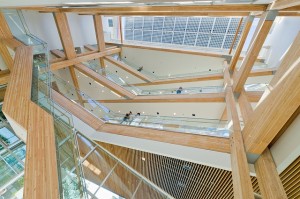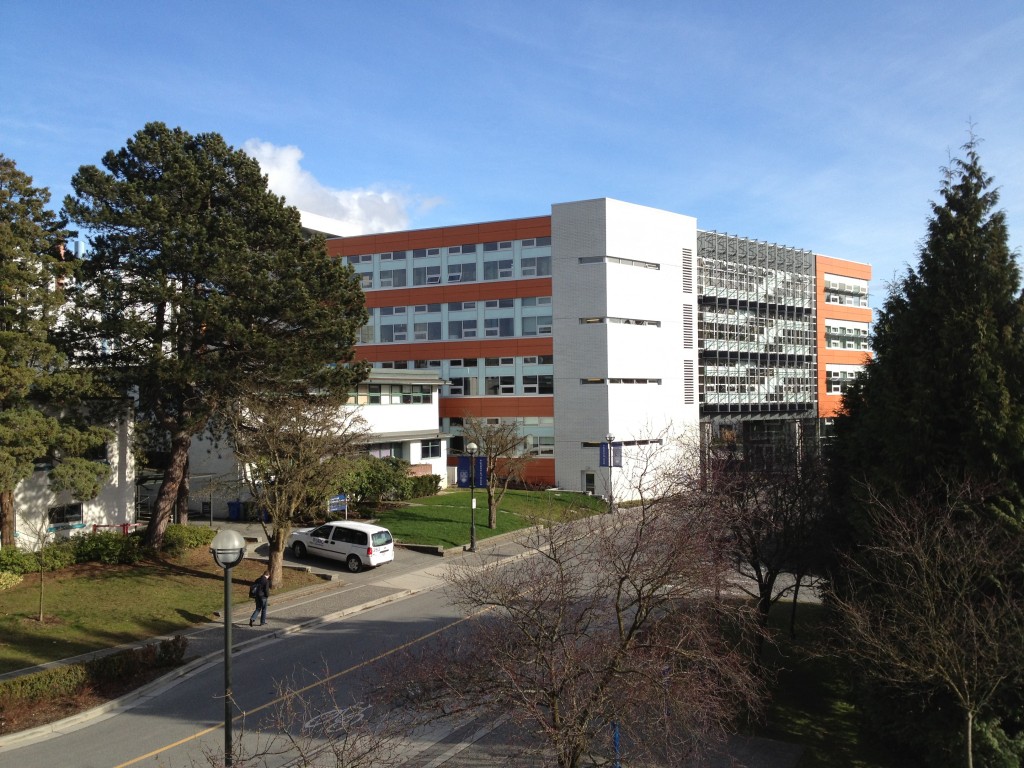Sustainable U
Guest author Steve Hillier is an engineering student at the University of British Columbia. He created this post for senior instructor Annette Berndt’s technical writing class.
Want to help save the planet? A career in engineering might be just what you’re looking for.
Engineers don’t just build bridges and design spaceships all day. We’ve got some of our best minds assigned to another important job: Protecting the environment.
The University of British Columbia in Vancouver, Canada, recently opened a new building called the Centre for Interactive Research on Sustainability or CIRS (pronounced “sirs”) for short. Engineers have designed it to help the university reduce its carbon footprint and it’s reported to be North America’s “greenest” building.

 Sustainable buildings usually try to balance their negative effects on the environment with positive effects. Much of the wood used to build CIRS came from forests that had already been destroyed by the mountain pine beetle, like the tree in the photograph, meaning that fewer living trees needed to be cut down for its construction.
Sustainable buildings usually try to balance their negative effects on the environment with positive effects. Much of the wood used to build CIRS came from forests that had already been destroyed by the mountain pine beetle, like the tree in the photograph, meaning that fewer living trees needed to be cut down for its construction.
 But what makes this $37 million “living laboratory” different from other sustainable buildings is that it is also a regenerative building. This means that the building doesn’t just make things “less bad” but it actually improves the environment and working/living conditions for human beings. The building collects rainwater for use in the building, such as for drinking water. It also stores heat from the sun and converts it into energy, and even provides extra energy for nearby buildings.
But what makes this $37 million “living laboratory” different from other sustainable buildings is that it is also a regenerative building. This means that the building doesn’t just make things “less bad” but it actually improves the environment and working/living conditions for human beings. The building collects rainwater for use in the building, such as for drinking water. It also stores heat from the sun and converts it into energy, and even provides extra energy for nearby buildings.
Some students wondered whether the building’s design also would influence human behavior. So they conducted an experiment comparing two lunch rooms with identical recycling bins. About 84 percent of the students who ate in the light-filled CIRS cafeteria sorted their trash, compared with only about half for the dingy traditional dining hall. Conclusion: Green engineering can change behavior.
Professor John Robinson, executive director of UBC’s Sustainability Initiative, explains the building’s features:

Other examples of sustainable buildings at the University’s Okanagan campus use geothermal energy. Geothermal energy comes from the earth and is environmentally friendly because it provides heat without burning fossil fuels. The campus happens to be located above an aquifer, which is a large supply of underground water. Engineers came up with a plan to dig down and collect heat from the water and distribute it to different buildings. This has reduced the amount of natural gas that needs to be burned to keep the buildings warm in the winter.
Think you could come up with a few ideas to help the environment and improve life? Engineering companies and government agencies are always looking for creative minds to bring fresh thinking to their organizations. Don’t assume that engineering is just about pocket protectors and math problems—you could make a real difference in our world!
Filed under: Civil, Environmental, Explore Engineering, Materials
Tags: carbon footprint, Center for Interactive Research in Sustainability, climate change, green building, Green Technology, Sustainability, University of British Columbia









